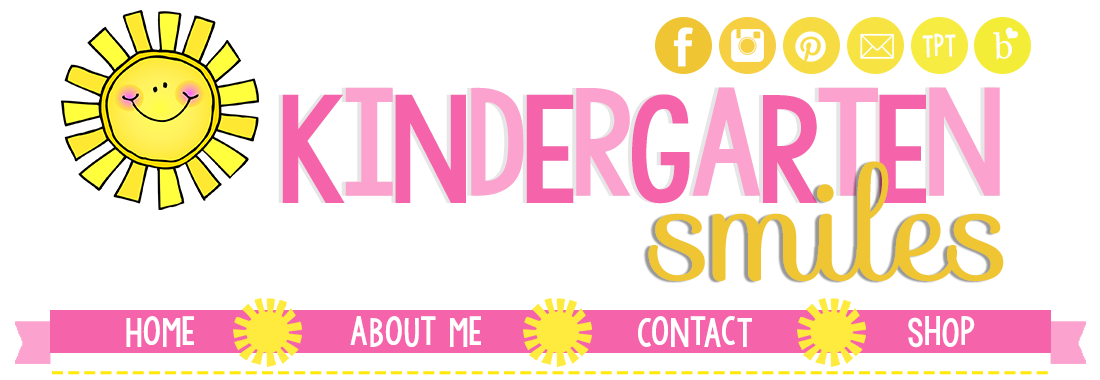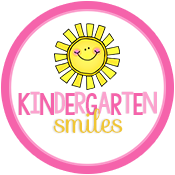Every year I said the same thing to myself, 'I am going to start math centers this year', and then I never did. Every year I continued to use our county's curriculum, which has been 'Go Math' for awhile now. I would still use math centers in my room but it would normally be A math center during my literacy block. The more I researched math centers, the more I realized that I wasn't doing what was best for my students. I needed to give them more hands on experiences and less time in the actual math book.
Last year I finally made that change. It was the best math decision I had ever made!
Students here are playing 'One More' together. They roll one die, add one, and cover that number. They each use their own color manipulative so at the end of the game, whoever has the most colors on the board, wins! (If you roll the die, add one, and there are no more of that number on the board, you skip a turn!)
Do I still use my math curriculum from the county?
Yes, I still use Go Math; however, I am lucky enough to work for a school that allows me to use the math book as a resource instead of a must! I use the math book as a guide for the standards that I need to teach. I also still use my math book for some of our whole group instruction.
What does my math block look like?
Your math block really depends on how much time you have allotted and what your school/county requires; however, I include math videos, a whole group mini lesson, guided math groups, and small group (or independent) rotations.
1. Math Videos:
I LOVE youtube for math videos! I can pretty much find any skill that I need online and my students seem to learn best with songs! I'll have a math video post coming soon so you can see some of my favorites!
2. Whole Group Mini Lesson:
This is when I'll use my math book to drive my instruction. I like to use the vocabulary and terms found in the book to ensure that my students are familiar with the terms that they will hear repeated throughout the school years with Go Math. We sit on the carpet in a huge circle with our math books in front of us. We do a ton of 'math talk' and even practice some examples in the book.
3. Guided Math Groups (15-20 minutes per group):
As my students are working in their math centers, I pull small groups up to my table to work on different skills. Think of this as the same as your guided reading--different groups will be working on different skills based on their needs. This allows me to differentiate the learning to meet the needs of that particular group. I may have a group working on number formation while another group is working on addition.
4. Small Group Rotations (15-20 minutes a rotation):
I have 8 math centers ready to go each Monday. My students will only go to 2 centers a week, Monday-Thursday. On Friday they have 'choice' and are not assigned centers. I do not pull math groups on Fridays either (unless I have a student really struggling).
Below you can see a ton of pictures to see what my centers look like. Click HERE for another post to see more, easy prep, math centers. A math center may also be on the computer, iPad, or even a center for students to just explore manipulatives.

Above you can see a child 'counting the room' which is the same as 'write the room'. Below you can see a 'spinner center' where students are spinning two spinners and comparing to practice greater than and less than.
In the two images below you can see children working on using manipulatives to count objects and graph them. When they are finished with their graph, they have to analyze their data.
In the two images below you can see students working on subtraction.
Below is an activity you can use as an 'add the room' activity or you can just leave it at a center. Students have to add both sides of their cards to create an addition sentence.
These centers repeat month after month, just adding on to the skill or becoming a little bit more challenging. This way not only do my students already know how to complete the center, but they are constantly working on all of their standards. We don't just learn a standard in September and then never hit on that standard again.
Above, you can see a child working on 'what number comes next' to help them to count forward from any given number. Below, you can see that we have started our 3D shape unit. This child is sorting shapes.
In this center students will spin the spinner and write the number. Then they will create a number bond. LOVE this!
Again, we are working on number bonds just in a different way. This time, students will roll 2 dice and record the numbers. Then they will solve.
At this pocket chart math center students are sorting their equations.
Here we are working on greater than/less than again (as seen earlier on in this post); however, we are working on the same skill in a different way, this time using dice.
What if I don't have time to meet with all of my groups/complete 4 rotations?
I don't either, so don't worry!! I only meet with 2 groups a day and my students only go to 2 rotations a day (even though there are 8 rotations introduced and going on in my classroom). This means that I meet with my students twice a week Monday-Thursday. (Fridays we do math tubs, but I let my students choose where they want to go). So if I have 4 math groups, I meet with group A and B on Monday, group C and D on Tuesday, and then back to A and B on Wednesday.
Try one of my math centers by clicking on the image below.
You can also see the entire BUNDLE below.

What are people saying about this math center bundle?
"This goes along exactly with the skills I teach month by month. It saves me so much work by not having to create it myself."
"This product was a HUGE time savor for math intervention groups and math centers. My K students loved them!"
"Every Kindergarten teacher needs this bundle! Thank you"
"This has made math centers in my room so much easier! Each month the centers are very similar and the students know what is expected. Love the I can cards. Thank you!!"
"One of my favorite purchases! This bundle is wonderful- thanks!!"
"This is such a wonderful product at a reasonable price! I love that it matches perfectly with the scope and sequence of my math series. I also like how I can pull centers from previous months for those who struggle or pull one from months we haven't gotten to yet for those who are more advanced. It's nice to have everything I need in one place!"
"In the past I have made many of my own math stations (what I call centers for math) to correspond with what I am teaching. This year I have no aide for the first time in twenty years of kindergarten. When I saw your packet, I dubbed you my "aide" (hahaha!!) and knew that I had to have this math bundle to help keep me sane this year. Thank you so much!! PS - I LOVE your products!! :)"
SaveSave








































